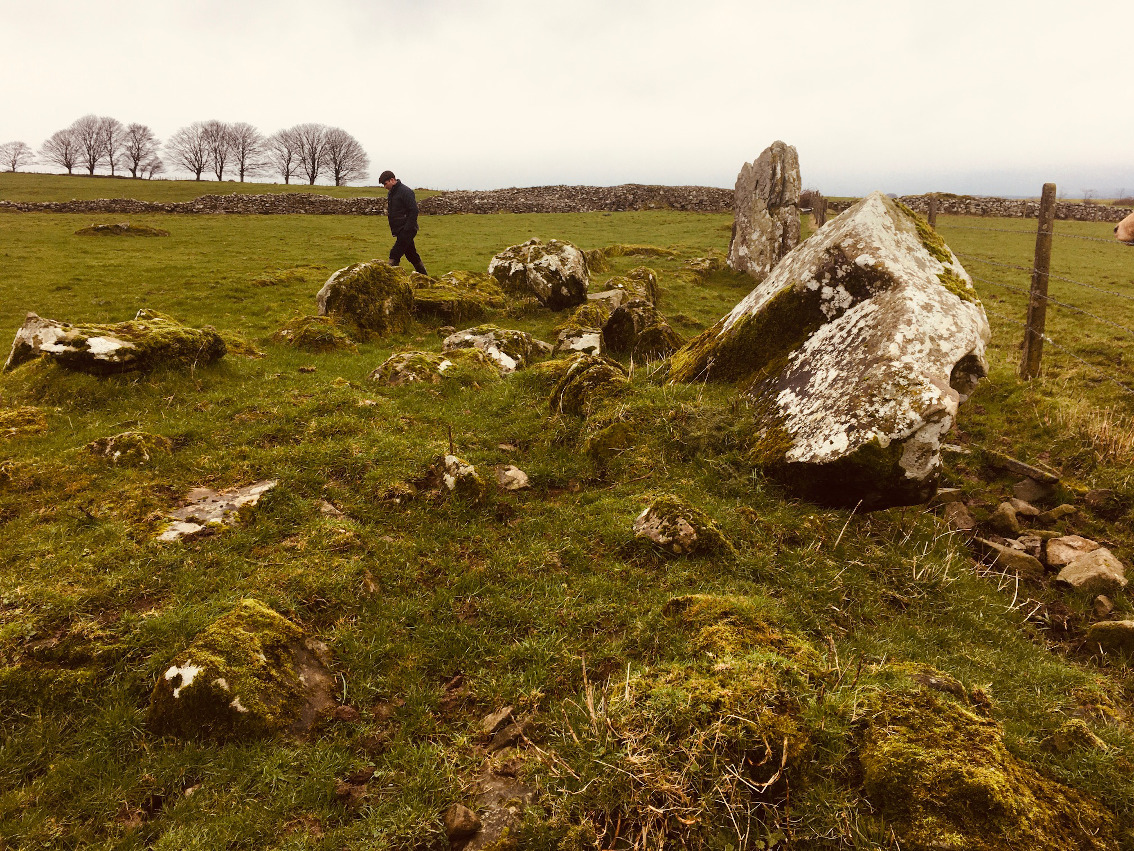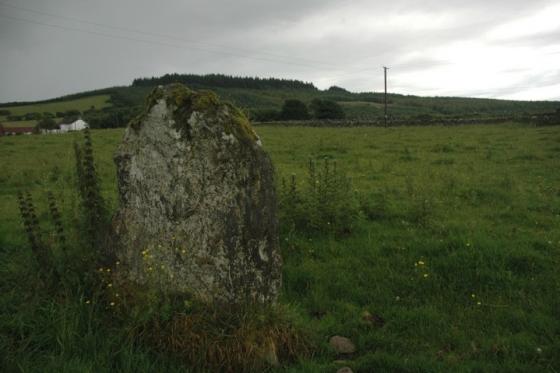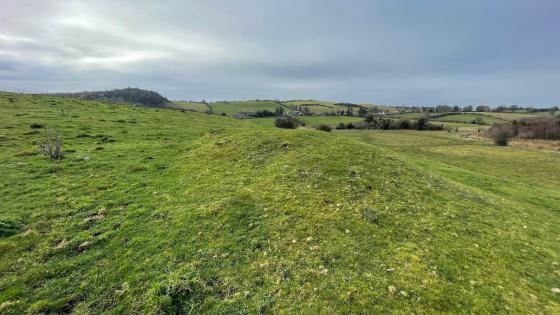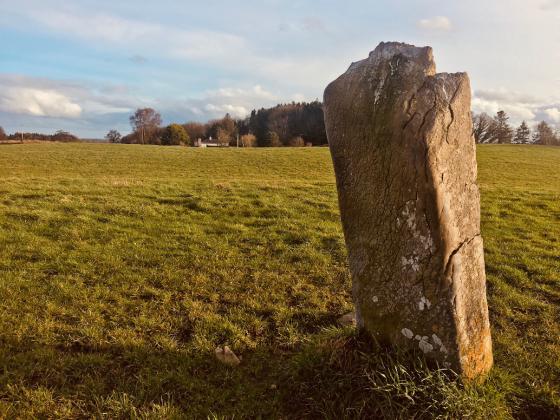
The odd stones at the northern end of the ‘circle’.

The odd stones at the northern end of the ‘circle’.

The north-western stone is a thin, flat slab.

The north-western stone leans into the ‘circle’. The odd tangential arrangement to its left adds to the mystery.

Western and southern stone.

The western stones splits the gap between Patrickstown Hill and Carnbane East.

The erosion of the western stone is great.

The most southerly of the stones. Cairn T in the distance.

Looking north along the eastern side of the circle. The stones are massive but the arrangements doesn’t make a lot of sense.

Cairn T visible in the distance atop Carnbane East. This is the eastern side/arc of the ‘circle’. The line of the old wall makes the large stone in the foreground look out of alignment. Ballinvally is puzzling, and this low wall is part of the enigma.

Approaching from the south-west.

A panoramic view looking roughly north

This stone sits beside the field fence, to the north east part of the circle. A low, ruined wall now runs along behind it. Behind is the easily recognisable shape of Patrickstown Hill.

Looking north-eastish

Looking in a south-west direction, Cairn T clearly visible on the peak to the left and a hint of a cairn on Carnbane West to the right.

One of the large stones still standing in the south west area of the circle, to the left of the stone, on the horizon Cairn T can be seen on top of Carnbane East, and on the far right of the photo is Carnbane West.
A last, fleeting visit before the third grim lockdown. I’d been here many times before but never made it to the circle, not confident enough to venture across the fields and over the fences. I’d read Ken Williams’s notes before but had forgotten the directions. We approached from the south, across marshy ground and traversing a small stream and a fence.
To be honest the place left me feeling a bit cold. It’s not the stones fault, just the air of general disregard and neglect and the mud and the grey December lightless atmosphere, all combining to a rushed and cursory visit. The place is puzzling anyway – was it a ‘true’ circle? The stones seem too large to be the remains of a kerb, and if you were to destroy a cairn here, why leave these remains? The north-eastern stone is unsatisfyingly mis-aligned, if these are the remains of a ‘true’ stone circle.
And yet the stones retain a power. All are large, most bulky, except the one at the north-west, the most slab-like. Beside this is where the passage-like stones jut out at a tangent. Over to the east a low double wall runs roughly north-south inside the ‘circle’. It looks ancient. The south-eastern stone is eroding nicely with runnels and gullies that are beginning to fill with soil.
The stones are at the east end of a field that slopes down from the west. At the top of the field there is a large habitation site and over the field wall is the impressive bivallate rath in the neighbouring townland of Drumsawry or Summerbank. A small standing stone is about 200 metres south-west of the ‘circle’.
Well this is an odd one! There’s been so much destruction its hard to imagine what originally stood here, but its not anything like a mis-interpretation of a ruined kerb from a cairn as I had thought in the back of my mind. The stones are massive, much larger than I expected, Burl says four are standing but on the ground its a bit more complicated. There are indeed four large stones, as tall, if not taller, than those around Newgrange but only one is quite as bulky. These stand in a sort of bent and stretched square but there are also large stones prostrate inside the area of the circle, to one side is a pile of field clearance or a ruined wall which has a large block sitting almost upright with what looks like packing stones underneath.
Beside another large upright there are two low stones, one about 6ft long and the other much smaller but they seem to arc around on a tangent from what would have been the circle. Very odd. They are much smaller than the upright beside them and look very mismatched but original nonetheless. There are lots of large and small slabs just visible around the place, inside and outside the circle and there is what looks like a large pit surrounded by heaps of large stones (field clearance?) off to the west of the circle, about 150 yards maybe. I didn’t venture over here because of a large herd of tetchy cows and calves watching my every move. Didn’t see any of the rock art Martin Brennan referred to but I think some was carted off to the National Museum in Dublin. Gave up looking in the gloomy light, not a great time to photograph or hunt rock carvings!
The owner of the land seemed ok with visitors but the directions were vague enough to border on the unhelpful so a bit hard to judge. Seemed cheery though so do call in as you have to go through his yard and down a very, very muddy track. Wear good boots and a smile and you should be alright!










































































